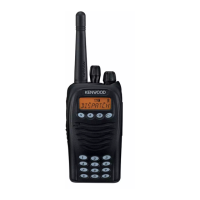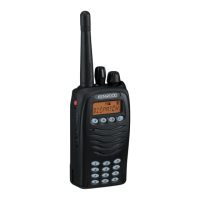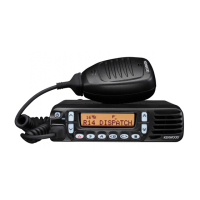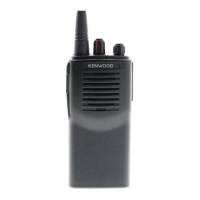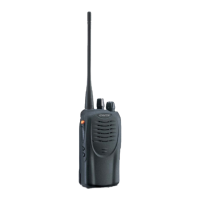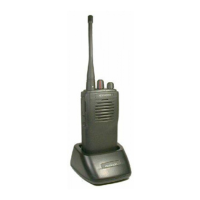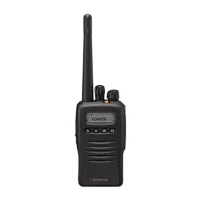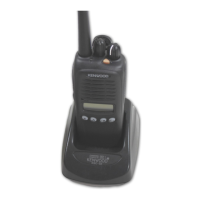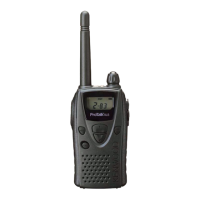TK-3170/3173
3
1. Modes 2. How to Enter Each Mode
Mode Operation
User mode Power ON
Panel test mode [A] + Power ON
PC mode Received commands from PC
Panel tuning mode [Panel test mode] + [S]
Firmware programming mode [Side2] + Power ON
Clone mode [B] + Power ON
Firmware version information [Side1] + Power ON
Self-programming mode [C] + Power ON
3. Panel Test Mode
Setting method refer to ADJUSTMENT.
4. Panel Tuning Mode
Setting method refer to ADJUSTMENT.
5. PC Mode
5-1. Preface
The transceiver is programmed by using a personal com-
puter, programming interface (KPG-22) and programming
software (KPG-101D).
The programming software can be used with an IBM PC
or compatible. Figure 1 shows the setup of an IBM PC for
programming.
REALIGNMENT
User mode
Panel test mode
Firmware version information
Panel tuning mode
Data programming mode
PC test mode
PC tuning mode
PC mode
Clone mode
Firmware
programming mode
Self-programming mode
Mode Function
User mode For normal use.
Panel test mode Used by the dealer to check the funda-
mental characteristics.
Panel tuning mode
Used by the dealer to tune the transceiver.
PC mode Used for communication between the
transceiver and PC (IBM compatible).
Data programming
Used to read and write frequency data and
mode
other features to and from the transceiver.
PC test mode Used to check the transceiver using the
PC. This feature is included in the FPU.
See panel tuning.
Firmware Used when changing the main program
programming mode of the flash memory.
Clone mode Used to transfer programming data from
one transceiver to another.
Firmware version Used to confirm the internal firmware
information version.
Self-programming
You can program the frequency signaling and
mode
other function using only the transceiver.
Fig. 1
IBM-PC
KPG-22
KPG-101D
Tuning cable
(E30-3216-05)
Gray
Gray/Black
1.5D-XV Lead wire
1.5D-XV Shield wire
RF Power meter
or SSG
+
–
+
–
SP
MIC
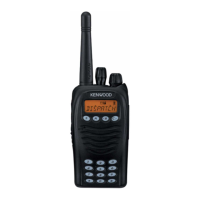
